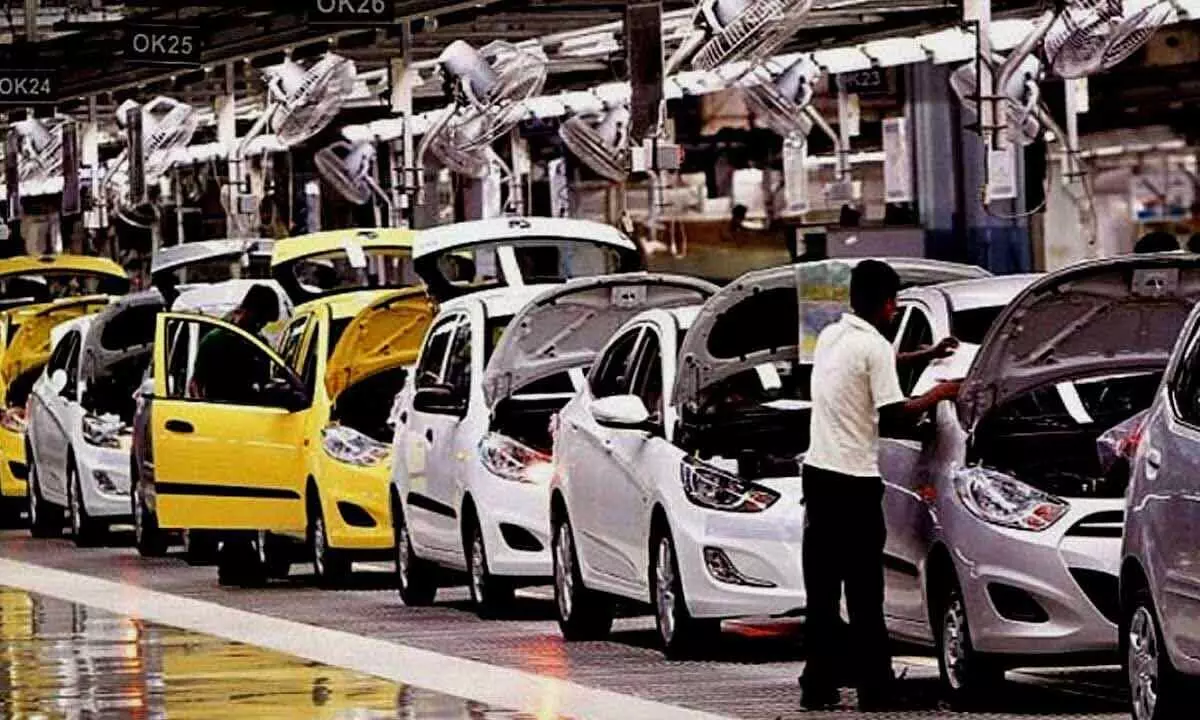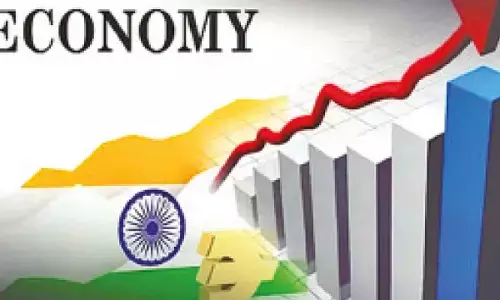Despite challenges, auto industry set for growth in coming months

Despite challenges, auto industry set for growth in coming months
The situation has now altered dramatically with growth picking up in most segments and easing of the chips shortage which had prevented manufacturers from meeting the full demand
The revival of the automobile industry here may receive a setback in the coming year owing to the recent US decision to curb exports of chips to China. Under the new rules, American companies will not be allowed to export machinery or raw materials to Chinese companies that manufacture chips and semiconductors. Luckily, for the time being, it is reported that original equipment manufacturers have sufficiently high inventories of chips to meet the needs of automobile companies for the next few months. But if the situation continues, there may be shortages by 2023.
Till such time, however, the Indian auto industry is in the throes of a demand revival with nearly all segments showing an upswing in sales in September. With the onset of the festive season, it looks as the scenario may improve even further in the coming months. While passenger and commercial vehicles were already showing signs of recovery in demand over the past few months, there finally seems to be a glimmer of improvement in the two wheeler segment. The rise in sales during September was 9 per cent compared to the same month in 2021. The volumes remain below pre-pandemic levels but the reports from dealerships show that the level of enquiries has picked up significantly.
One of the reasons for the poor performance of the two wheeler segment has been the rapid rise in prices of these vehicles. These have been raised as much as five times over the past year. Besides, vehicle loans have become expensive with successive rate hikes by the Reserve Bank of India. But these are factors affecting buyers of the more expensive passenger cars as well. So the inevitable conclusion is that those with lesser purchasing power are still struggling with post-pandemic incomes having failed to rise to pre-Covid levels.
It also indicates that the country's economic recovery remains fragile with those at the bottom of the pyramid still facing hardships owing to growing inflationary pressures and the jobs market having failed to revive to pre-pandemic levels. The ills of the auto industry reflect the situation in the wider economy. The bellwether nature of the sector has been highlighted by Mckinsey in a study which describes it as one of the leading driving forces of the economy. It finds that the industry contributes about 49 per cent to India's manufacturing GDP and 7.5 per cent to the GDP at large. In addition, the auto sector's value chain is responsible for 32 million jobs.
It is thus significant that the sector is looking up at a time when India has been cited as being a bright spot on the dark horizon of the global economy by the International Monetary Fund. It is expected to grow by 6.8 to 7 per cent in the current fiscal though the momentum may slow down next year. This is in sharp contrast to most other countries which have recorded a contraction in growth this year. The global economy is set to increase by only 3.2 per cent in 2022 and at an even lower 2.7 per cent in 2023.
It is in this context that one must view the improved performance of the automobile industry. It had been struggling over the past year due to the impact of the second Covid wave, rising input costs and global supply chain disruptions leading to shortages of semiconductors. The situation has now altered dramatically with growth picking up in most segments and easing of the chips shortage which had prevented manufacturers from meeting the full demand. Component shortages have been eased and the festive season demand is picking up. It looks as if the industry is poised for a significant revival in the current fiscal.
At the same time, the critical role of this industry both in contributing to GDP and overall employment levels implies that it must take more ethical attitudes towards future development. For instance, it should have not been tardy in introducing safety features in vehicles. The issue of incorporating air bags has lately become an issue of discussion between the government and industry, with the latter insisting that it will make smaller cars more expensive for buyers. The fact is that airbags are installed in all cars throughout the world on a routine basis, given their key role in saving lives in accidents. It thus does not behove the industry to argue against installing a feature that has been seen time and again to be a protection for those involved in crashes.
The issue was highlighted during the recent crash in which the noted industrialist, Cyrus Mistry, passed away. Both seatbelts and airbags protected those in the front seats. This has spurred the Maharashtra government into making seatbelts mandatory in the rear seats and this policy is likely to be followed by many other states. Similarly, airbags need to be incorporated into all types of vehicles, not just the more expensive ones, as safety of lives need to be the paramount consideration.
On the other issue of developing electric and hybrid vehicles, the industry has been much more responsive to the push being given by the central government towards more environment-friendly modes of transport. A few years ago, however, there was dismay over the policy announcements in favour of EVs and this was even blamed for the poor sales at the time. The situation has now changed with all major manufacturers rolling out new EV models for which there is huge demand in the market currently. Though numbers are not high yet, the growth rate is steep especially as petrol and diesel prices continue to climb in tandem with global rates.
The Indian automobile industry is already the world's fourth largest with a value of 100 billion dollars and is expected to provide 65 million jobs by 2026. All signs show that right now it is poised for a significant spurt in growth despite looming issues such as chip shortages and continued supply chain disruptions affecting component availability in the coming months.














